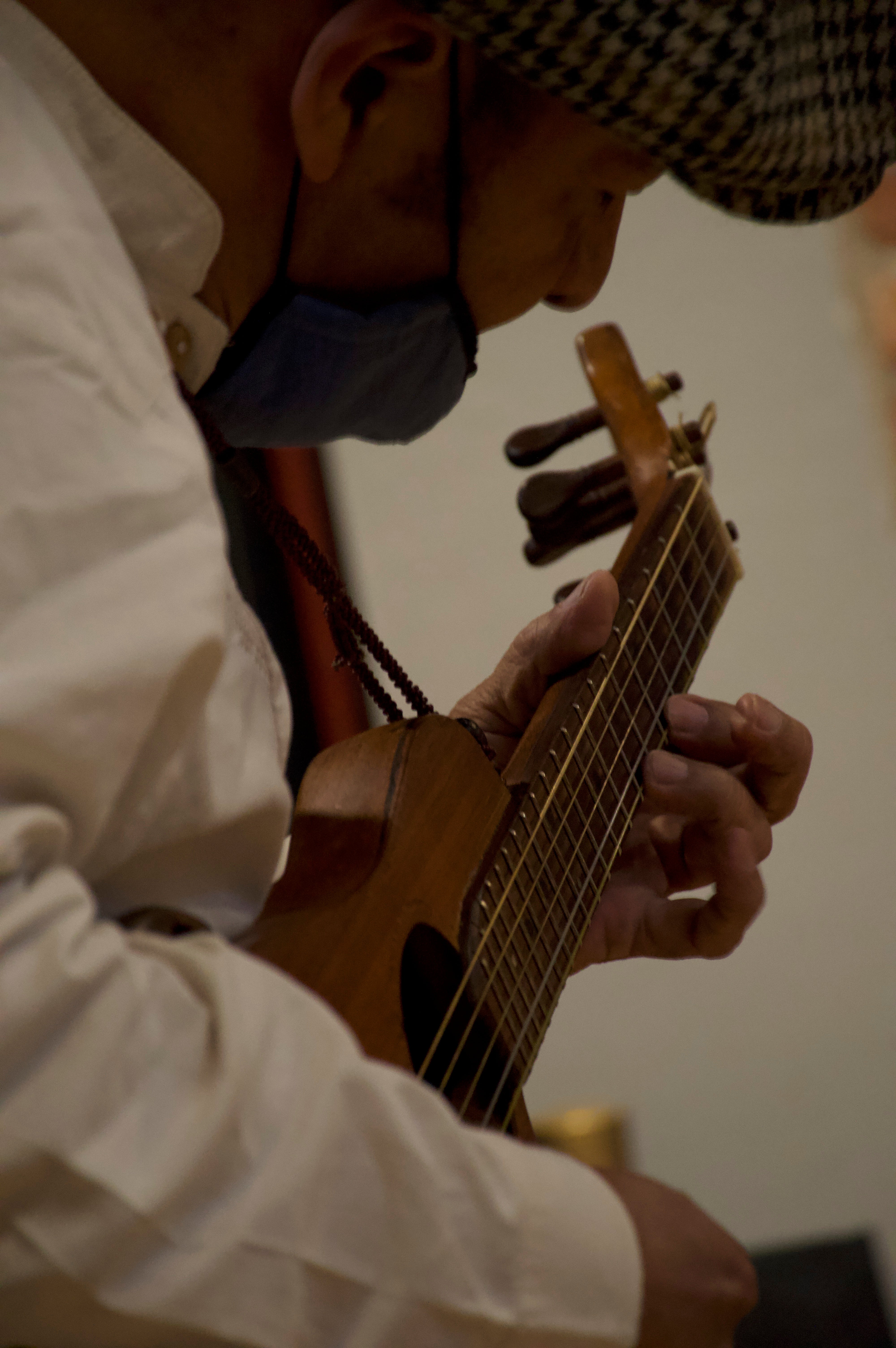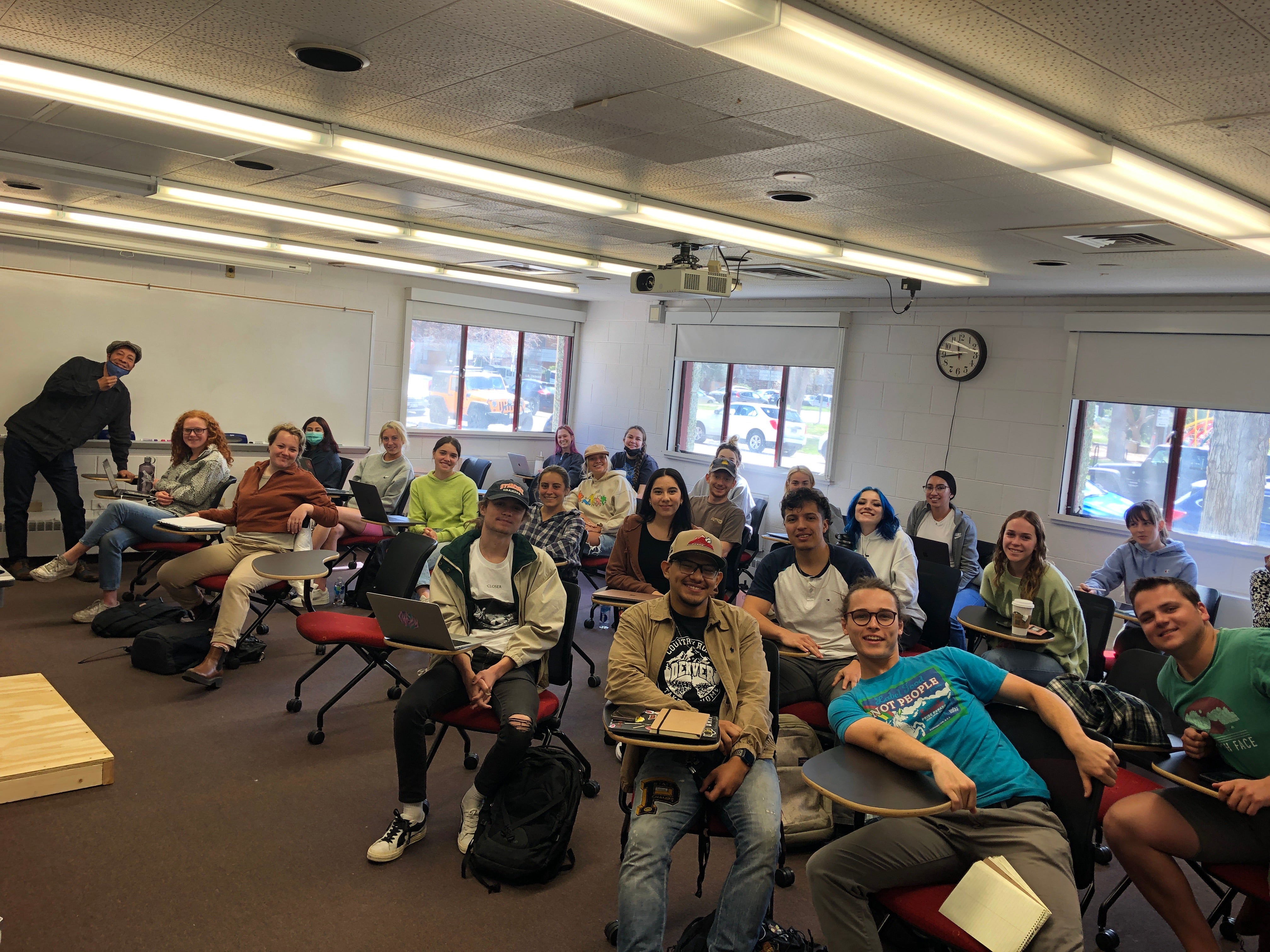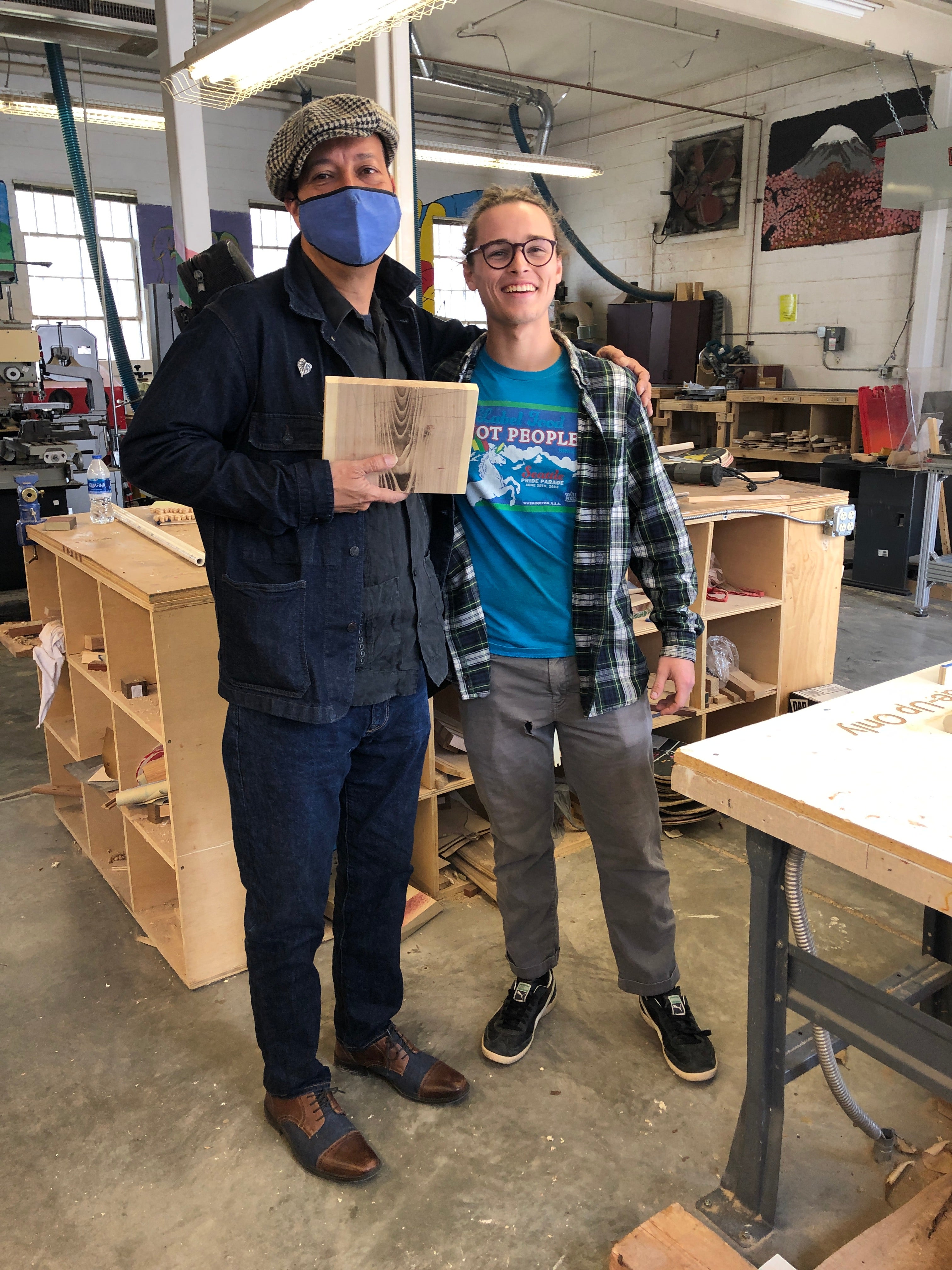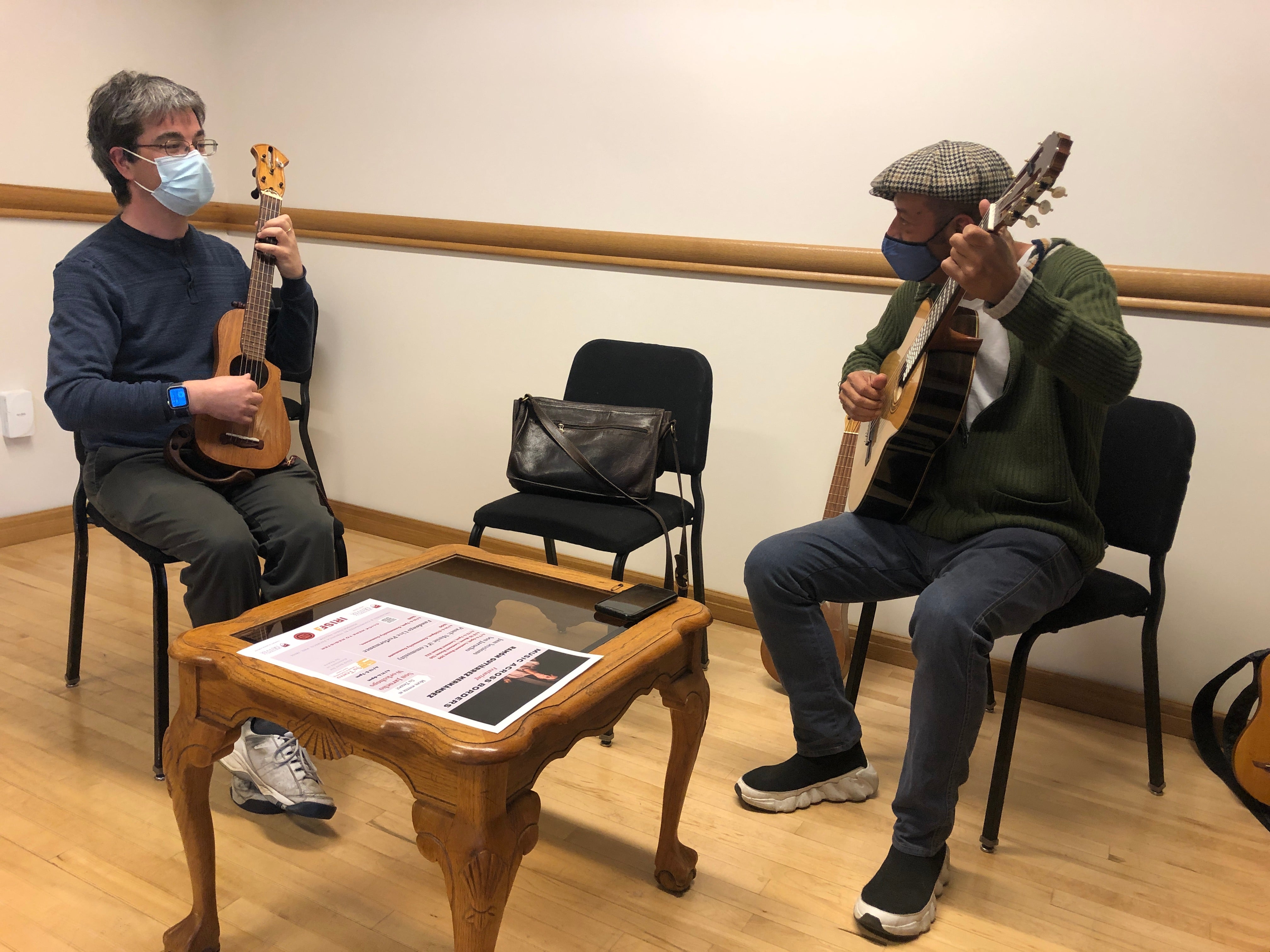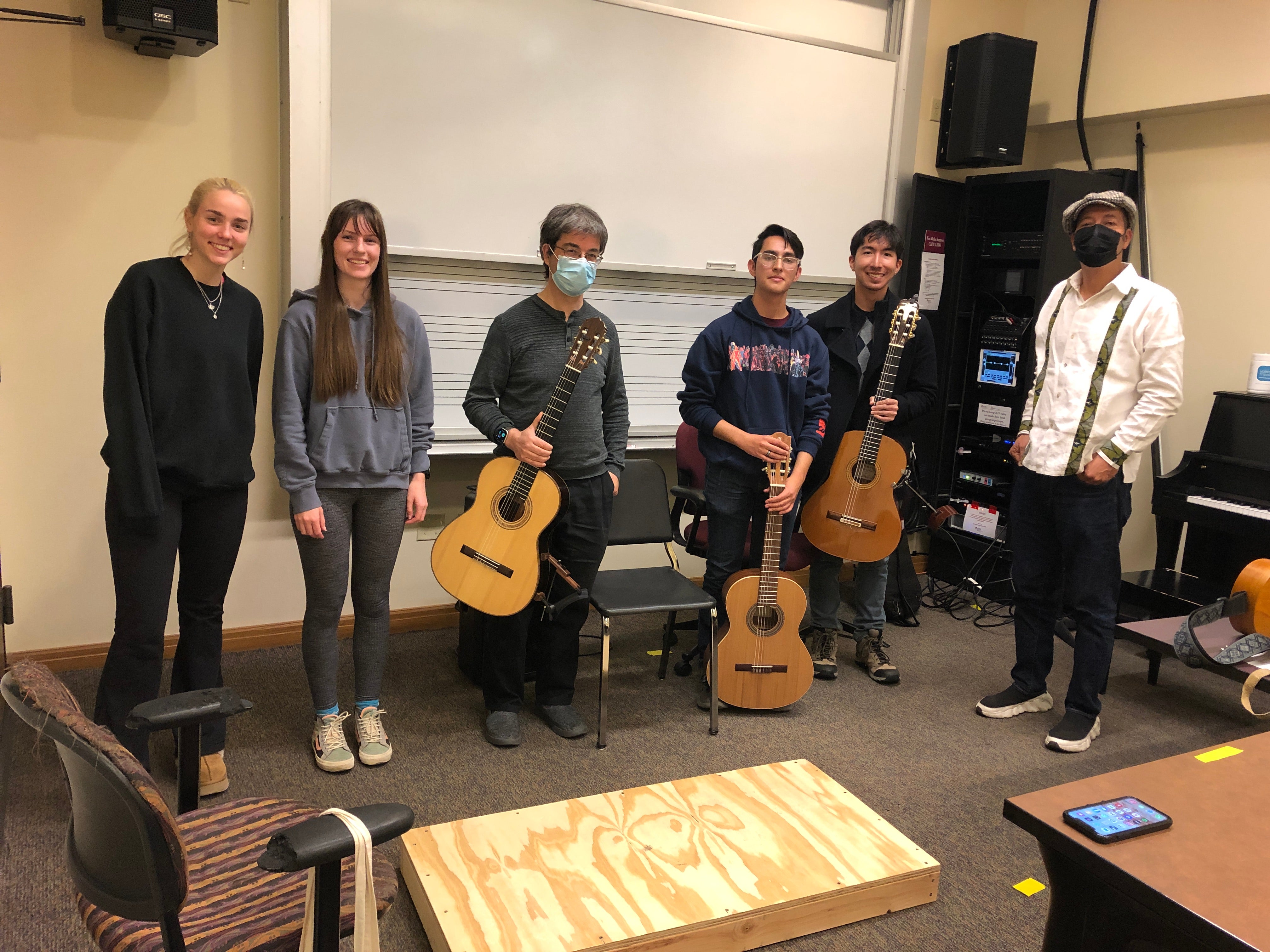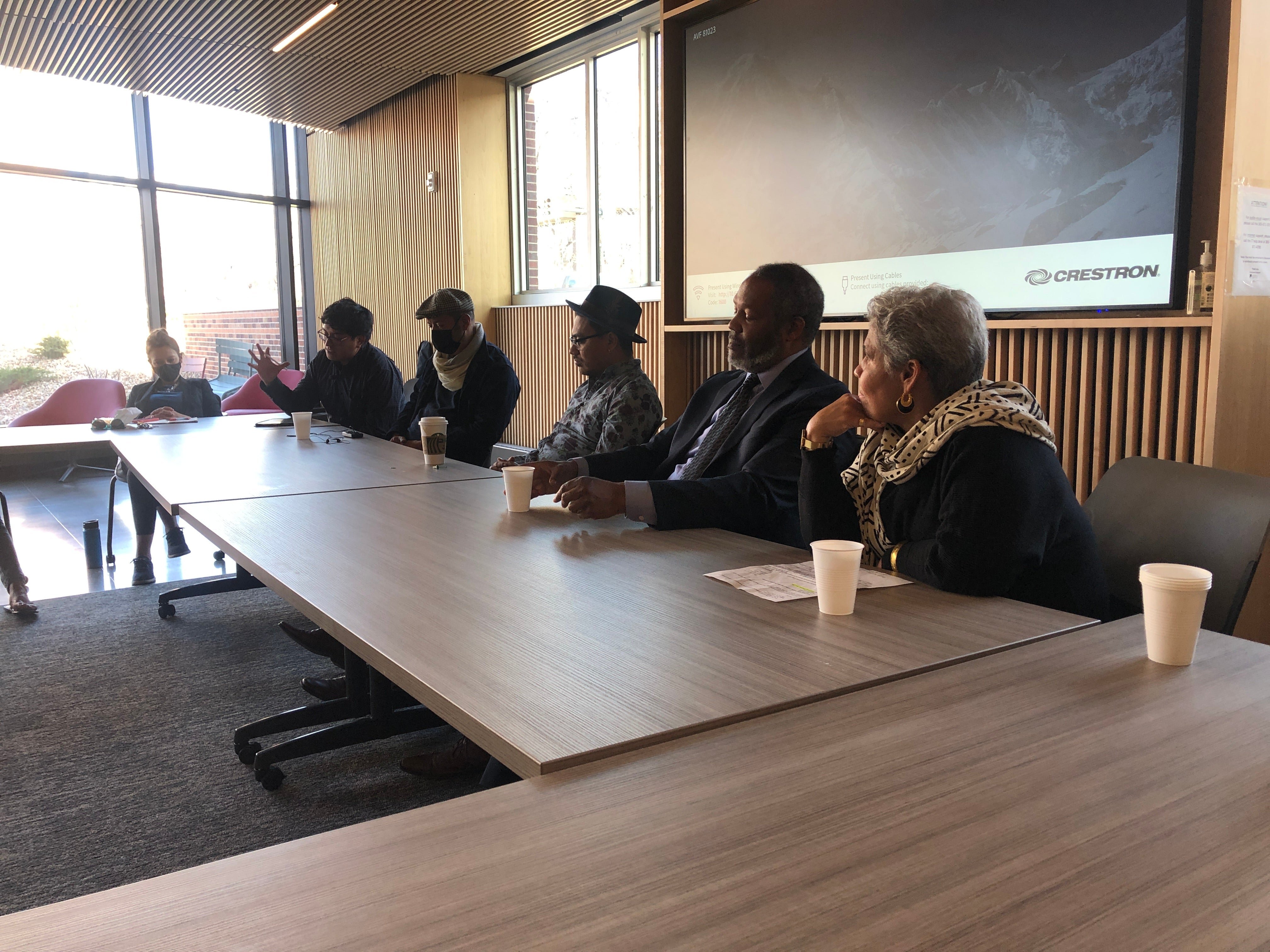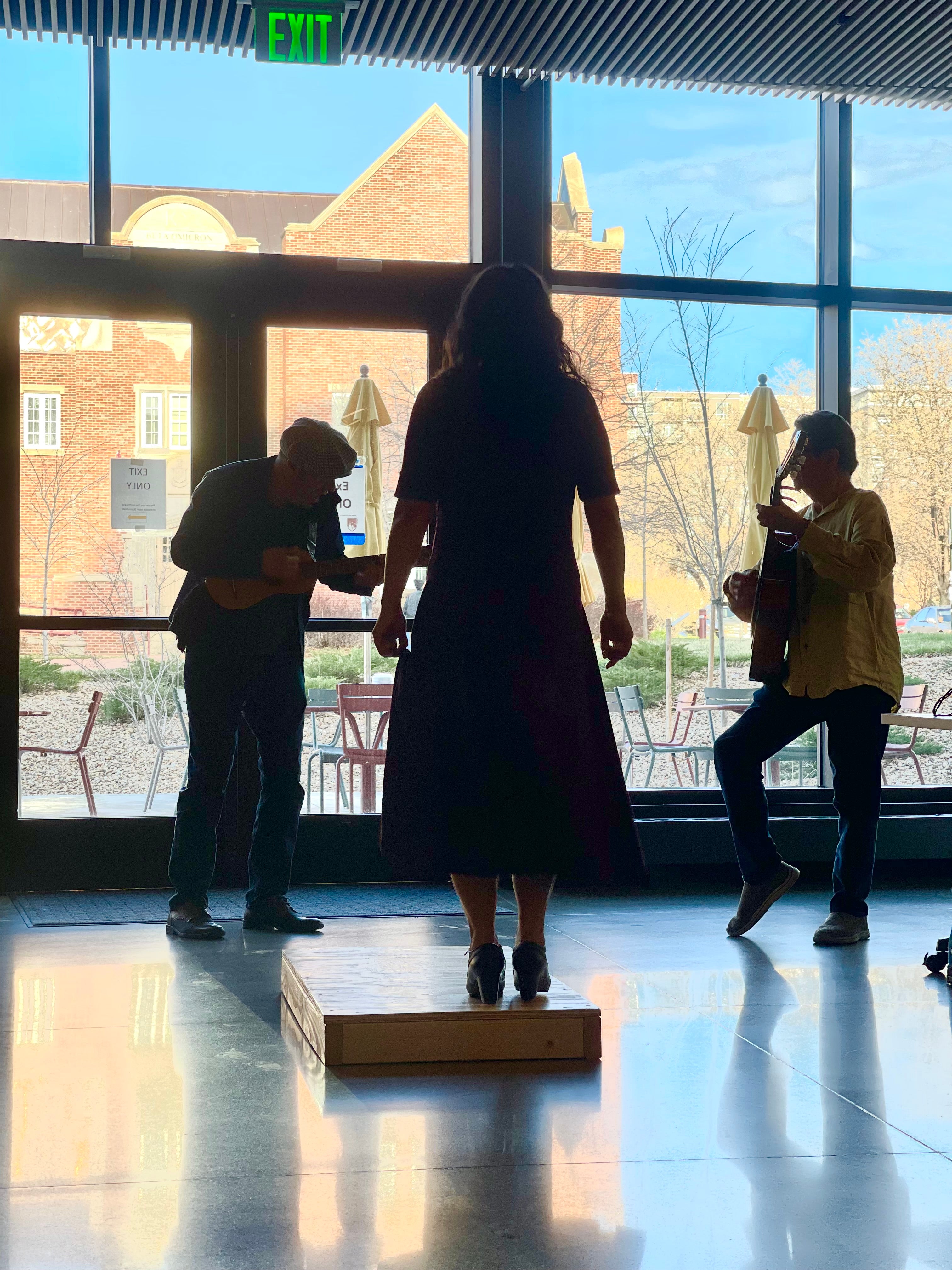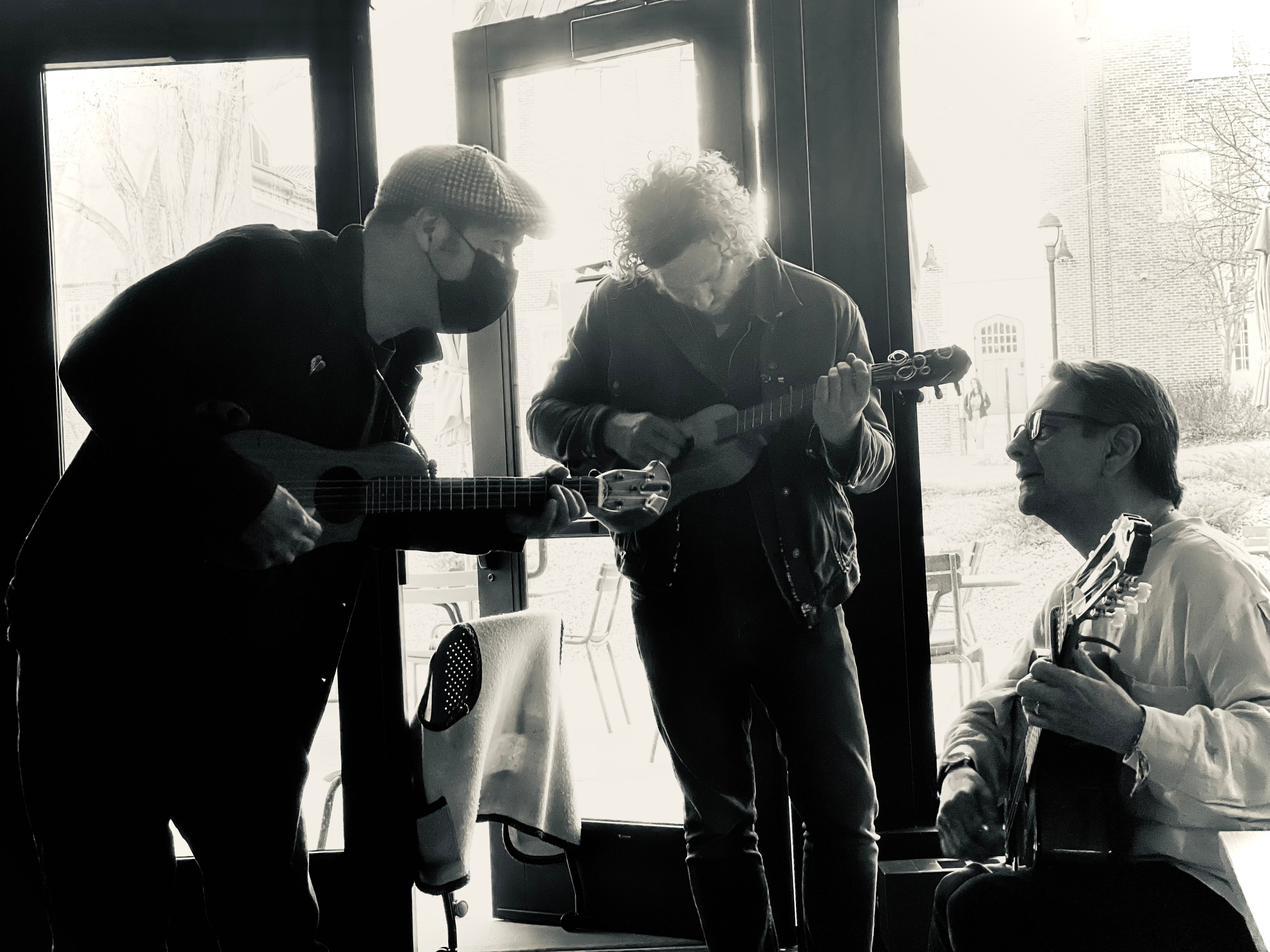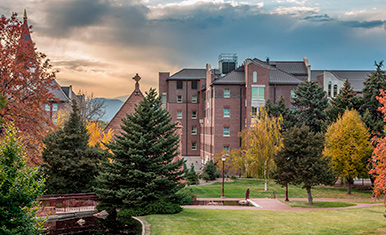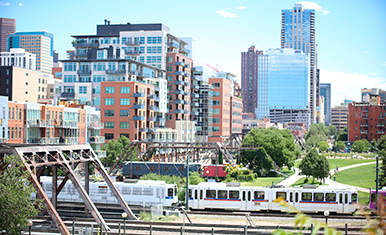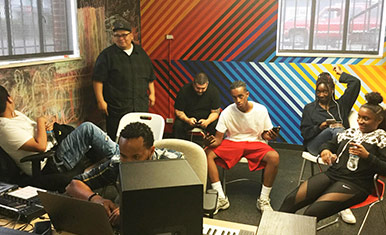Music Across Borders: Bridging Latinx Communities in DU and Denver
By Verónica Pacheco, PhD
Director of the Music Across Borders Project and IRISE Postdoctoral Fellow
The Music Across Borders project (MAB) hosted Mr. Ramón Gutiérrez Hernández, a prominent son Jarocho musician from southern Veracruz, Mexico, as an initiative to connect DU students with the organization Su Teatro: Cultural and Performing Arts Center, while providing an enriching learning experience inside and outside the classroom. With the support of the DU Center for Immigration, Policy, and Research (CIPR), the DU Latinx Center, the Lamont School of Music, and IRISE, between April 7th to the 15th of 2022, students, faculty, and members of the Latinx community participated in class presentations, music workshops and jamming sessions, and a fandango at DU and Su Teatro. Additionally, and in the context of the MAB project, Mr. “Jose” Jozer Guerrero, Prof. M. Roger Holland, II, and Mrs. Dianne Briscoe McKenzie joined Mr. Gutiérrez in a panel to talk about their engagement with music and community-based projects.
Together with Mr. Gutierrez, the MAB project bridged learning and community, Mexico and the US, and DU students with the Latinx community in Denver
An acclaimed musician and outstanding luthier, Mr. Ramón Gutiérrez Hernández is a cultural bearer of son Jarocho, a long-standing music tradition from southern Veracruz, Mexico. He is the fifth generation of musicians in his family and a master of guitarra de son, a four-string instrument that carries the countermelody that shifts between the pieces’ polyrhythmic structures and melodic lines. Among many career highlights, he has performed as a bandleader of ‘Son de Madera’ in the Smithsonian Folk Life Festival, the Kennedy Center, and numerous festivals in Mexico, South America, and Europe. Together with Mr. Gutiérrez, the MAB project bridged learning and community, Mexico and the US, and DU students with the Latinx community in Denver.
Music, here, proves to be a fantastic didactic tool. Students enrolled in the class “MFJS2260: Music, Race, and Ethnicity in Latin America,” which I offered in Spring 2022, conducted ethnomusicological assignments to explore cultural intersections that resulted from the encounter of Indigenous, European, and African populations in Latin America. Attending the MAB events and incorporating research techniques such as participant observation, interviews, and thick descriptions, DU students developed research papers and media collections while critically discussing class material and theoretical concepts such as interculturality, post-colonialism, decolonization, and imperialism. Some of the students’ collections are shared on this website.
Singing together to condemn institutional violence and claim social equity in the Chicano and the Civil Rights Movements was instrumental in attaining changes for African Americans and Latinx, who have been historically marginalized in the US.
At the core of son Jarocho is the community. In fact, the main context of the performance is the fandango, a music gathering that brings together chordophones of different sizes (chaquistes, mosquitos, jaranas, requintos, and leonas), a wooden platform known as tarima over which dancers resonate with their special shoes for the zapateado, and poetry, commonly sung in octosyllabic verses organized in quartets, sextets, and décimas. Improvisation is extensively used to interact in the fandango. While participants follow the rules to intertwine their playing, dancing, and poetry, the fandango is a collective event that embraces all without distinction of performers and audiences. The participatory nature of this music genre enabled an easy social engagement to exchange repertoires with music students and faculty at Lamont School of Music, and let attendees try instruments, dancing, or singing at DU and Su Teatro.
Based on the son Jarocho repertoire, the jamming sessions were moments of exchange between folk, popular, and classical music. Professor Jonathan Luke Leathwood, the guitar professor at Lamont School of Music, initially conversed with Mr. Gutiérrez about the different tuning systems in son Jarocho and similar repertoires between the Spanish Baroque string instruments such as vihuelas and those found in son Jarocho. One of the examples is “Guardame las Vacas,” a variation to a folk tune written by the sixteenth century Spanish vihuelist Luys de Narváez (1500-1555) and “La Lloroncita,” a traditional son Jarocho piece. Both Prof. Leathwood and Mr. Gutiérrez engaged in playing the similar harmonic cycle and the almost identical melodies of both pieces while improvising. Moreover, this Baroque particularity of son Jarocho’s repertoire was the base for putting together two classes: “MFSJ2260” and Dr. Gillan L. Gower’s class “MUAC2053: Baroque Music.” The classes engaged with Mr. Gutiérrez’ performance and class presentation about son Jarocho and conversations about the similarities in the music and instrumentation of the Trans-Atlantic Baroque.
Son Jarocho is a participatory music genre rooted in the community
At Su Teatro, Mr. Gutiérrez performed in the XicanIndie Film Festival in collaboration with Mr. Nicolas Valdez & Mr. Luis Gonzalez. Additionally, he provided workshops to groups of youth and children where they interacted with polyrhythm structures and learned sones such as “Cascabel” (rattlesnake) and “Guacamaya” (macaw). Students from the “MFJS2260” class participated in the festival and workshops and conducted observations and interviews to understand how son Jarocho generates participation and the dynamics surrounding the tarima, which is placed at the center of the music gathering. While the DU students conversed with Mr. Gutiérrez to understand the significance of this music genre to multiple communities in Mexico and beyond, they also analyzed the history of the Veracruz port and its relevance to the colonial enterprise. In the conversations, Mr. Gutiérrez pointed out the clear influences of African music elements and labor in sones such as “El Coco” (the coconut). Enlightening reflections came into the students’ papers when they intersected class material with themes of cultural dissemination and racial and ethnic inequalities resulting from slavery and land disposition during the colonial period in the area of Veracruz.
DU students developed research papers and media collections while critically discussing class material and theoretical concepts such as interculturality, post-colonialism, decolonization, and imperialism.
The concluding events, and the peak of Mr. Gutiérrez’ visit, were a panel and a fandango that occurred at the DU Community Commons on April 14th. Four speakers from different backgrounds sat together to discuss their role in shaping and leading music-and-community-based projects from visions of activism, social justice, choral leadership, and son Jarocho. Together with Mr. Gutiérrez, the panelists included: Mr. “Jose” Jozer Guerrero, the CAEI Associate Director/Lead Teacher at Su Teatro; Prof. M. Roger Holland, II, a Teaching Assistant Professor in Music and Religion and Director of The Spirituals Project at the Lamont School of Music; and Mrs. Dianne Briscoe McKenzie, a retired Denver County Court Judge in Denver Colorado and an active member of the Spirituals Project.
Participatory music creates a more democratic space for people to engage in the process of music-making
Son Jarocho is a participatory music genre rooted in the community, and the panel recognized the power of participatory music in shaping communities, preserving cultural memory, and conveying political change and social justice across different geographies and histories. Mr. Guerrero and Prof. Holland illustrated how singing together to condemn institutional violence and claim social equity in the Chicano and the Civil Rights Movements was instrumental in attaining changes for African Americans and Latinx, who have been historically marginalized in the US.
Participatory music creates a more democratic space for people to engage in the process of music-making. As a choral conductor, Prof. Holland said in the panel that democratizing the arts is tricky. Western ensemble structures of learning, producing, and participating in music-making’s creative and performative aspects are very hierarchical. “I direct, you follow,” he said. However, teaching at DU and engaging with ethnomusicology and ethnography have shifted his consideration of music leadership. Inspired by singers such as Bernice Johnson Reagan, a member of the vocal ensemble Freedom Singers from Albany, Georgia, and a figure of the Civil Rights Movement, Prof. Holland takes on the idea of a “song leader.” In this model, the leader is a facilitator who provides ownership and leadership to the participants, he commented.
Indeed, as the director of the Spirituals Project and as an educator, Mr. Holland aims to create a more democratic space for music-making and learning. Due to the relevance of the Spirituals Project to American history and the community involvement in the project, it is essential to count on a leader that understands the historical value of the repertoire and engages the community. In this context, as a member of the Spirituals Project and working under Prof. Holland’s leadership, Mrs. Dianne Briscoe McKenzie recognizes his leadership as essential for the positive outcomes of this community-based project.
In the fandango surrounding the tarima, we danced, played, and sang, following Mr. Gutiérrez’ leading voice and requinto. Many joined with jaranas after Mr. Gutiérrez showed them the positions and strumming techniques, while others danced in turns on the tarima. Mr. Antonio Fuentes, a member of the Spirituals Project who attended several events, joined with his six-string guitar. While Mr. Gutiérrez provided us with music throughout his visit, the fandango closed the events with a high note.
Anchored on the son Jarocho tradition that Mr. Ramón Gutiérrez Hernández embodies, DU students, faculty, and members of the Latinx communities in DU and Denver bridged ideas of social equity with conflicting colonial histories of the Americas while sharing spaces of music-making. Thus, the MAC project provided a first-hand music experience and cultural exchange between DU and Su Teatro and connected the geographies of Mexico and the US.

Spotify Playlist
A collection of music by Ramón Gutiérrez Hernández.
Ramón Gutiérrez band | #CauzEnCasa
Ramón Gutiérrez es sonero, compositor y laudero veracruzano. Artista, que transmite el sonido de la tradición con su voz y la madera, se presenta esta noche en conjunto para compartir su experiencia y sus alegrías.
Son de Madera - "La Totolita (The Little Turkey)" [Studio Session]
Son de Madera, from the state of Veracruz, Mexico, perform an exciting, regional music called son jarocho. Here, they record "La totolita (The Little Turkey)" in the studio for their 2009 album 'Son de Mi Tierra.' Rubi del Carmen Oseguera adds rhythm and depth to the song through traditional zapateado dance.
Foro del Tejedor Son de Madera- Jarabe Gatuno
Foro del Tejedor Son de Madera- Jarabe Gatuno


